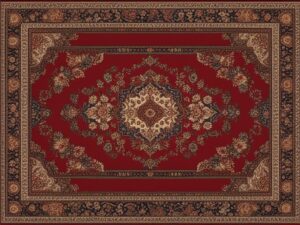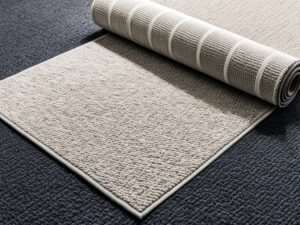Hanging a Persian rug on the wall is a unique and stylish way to display its beautiful design. Whether you have a prized vintage rug or a modern piece, showcasing it on the wall can add elegance and sophistication to any room. In this article, we will explore different methods for hanging a Persian rug on the wall, from adding a sleeve to using rug clips or a quilt hanger. Discover the possibilities and find the perfect way to showcase your Persian rug.
Key Takeaways:
- Hanging a Persian rug on the wall can add a unique touch to any room and display its beauty.
- There are several methods you can use to hang a Persian rug, including adding a sleeve, using rug clips, or using a quilt hanger.
- Adding a sleeve to the back of the rug provides a seamless and secure option for hanging.
- Rug clips offer a DIY option that is quick and easy for hanging a Persian rug on the wall.
- Using a quilt hanger is ideal for small or lightweight rugs, providing a secure and visually appealing display.
Adding a Sleeve to the Back of the Rug: A Seamless and Secure Option
One of the simplest and most secure ways to hang a Persian rug on the wall is by adding a sleeve to the back of the rug. A professional can carefully stitch a length of fabric, such as wool or cotton canvas, to the underside of the rug to create a sleeve. This sleeve allows you to slide a metal or wooden rod through it, providing a seamless finished look. Opting for a decorative finial and brushed metal rod can add extra visual interest to the display.
By utilizing a sleeve, you can ensure that your Persian rug is securely mounted on the wall without causing any damage to the rug itself. This method is especially suitable for larger or heavier rugs that require a more robust hanging solution. Additionally, the sleeve provides a clean and professional-looking display, allowing the intricate details and patterns of the rug to take center stage.
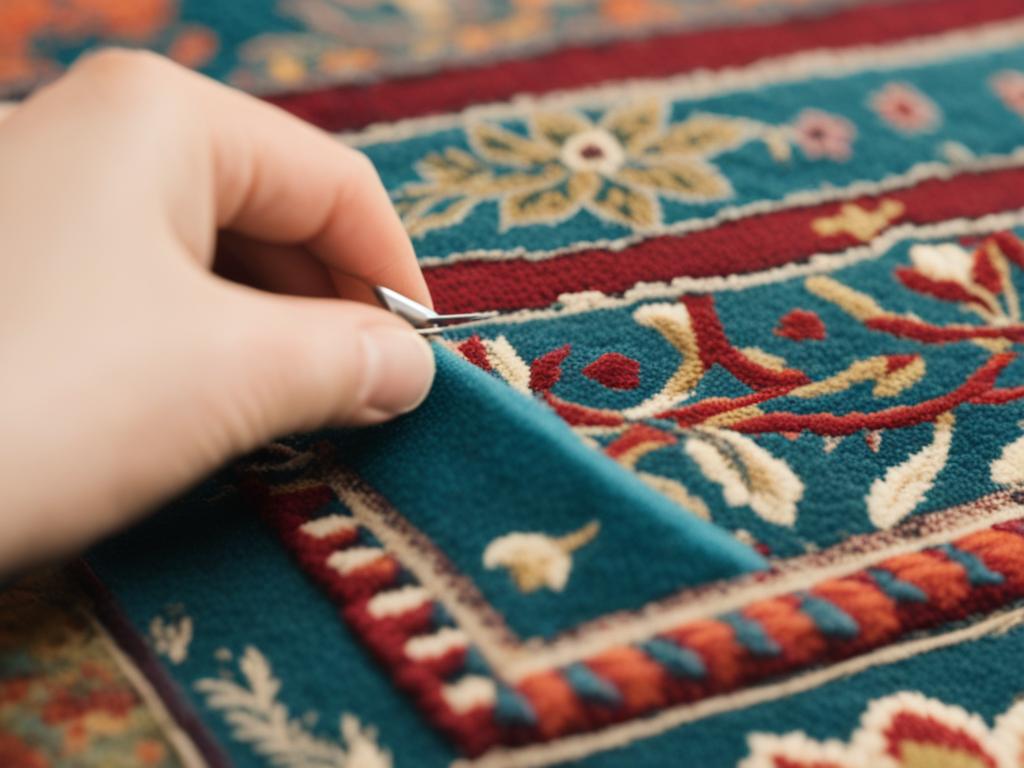
Advantages of Adding a Sleeve:
- Securely holds the rug in place, preventing it from shifting or falling off the wall
- Preserves the condition of the rug by eliminating the need for nails or other potentially damaging hanging methods
- Allows for easy removal and rehanging, making it convenient for cleaning or rearranging
- Creates a seamless and finished look, enhancing the overall aesthetic appeal of the rug display
When choosing a sleeve for your Persian rug, make sure to select a material that is durable and compatible with the rug’s fabric. Wool or cotton canvas are popular choices due to their strength and ability to blend seamlessly with the rug’s texture. The size of the sleeve should match the width of the rug, ensuring a snug fit and optimal support.
Once the sleeve is securely attached to the rug, you can insert a metal or wooden rod through it. The rod should be long enough to span the width of the rug, providing even weight distribution and stability. Consider opting for a decorative finial at each end of the rod to enhance the overall visual appeal of the display.
With a sleeve-mounted Persian rug, you can transform any wall into a stunning art display. Whether you’re showcasing an heirloom rug or adding a touch of elegance to your home decor, this seamless and secure hanging option offers both functionality and beauty.
Using Rug Clips: A DIY Option for Quick and Easy Hanging
When it comes to hanging oriental rugs on the wall, rug clips provide a simple and convenient DIY option. With rug clips, you can effortlessly showcase your persian rug as a stunning wall hanging. Whether you have a small or lightweight rug, rug clips offer a quick and easy solution for displaying your prized possession.
Rug clips come in various styles and designs, allowing you to choose the one that complements your persian rug and enhances its visual appeal. From clips that hang from a hook to those that can be mounted on a bar or display stand, you have plenty of options to suit your aesthetic preferences.
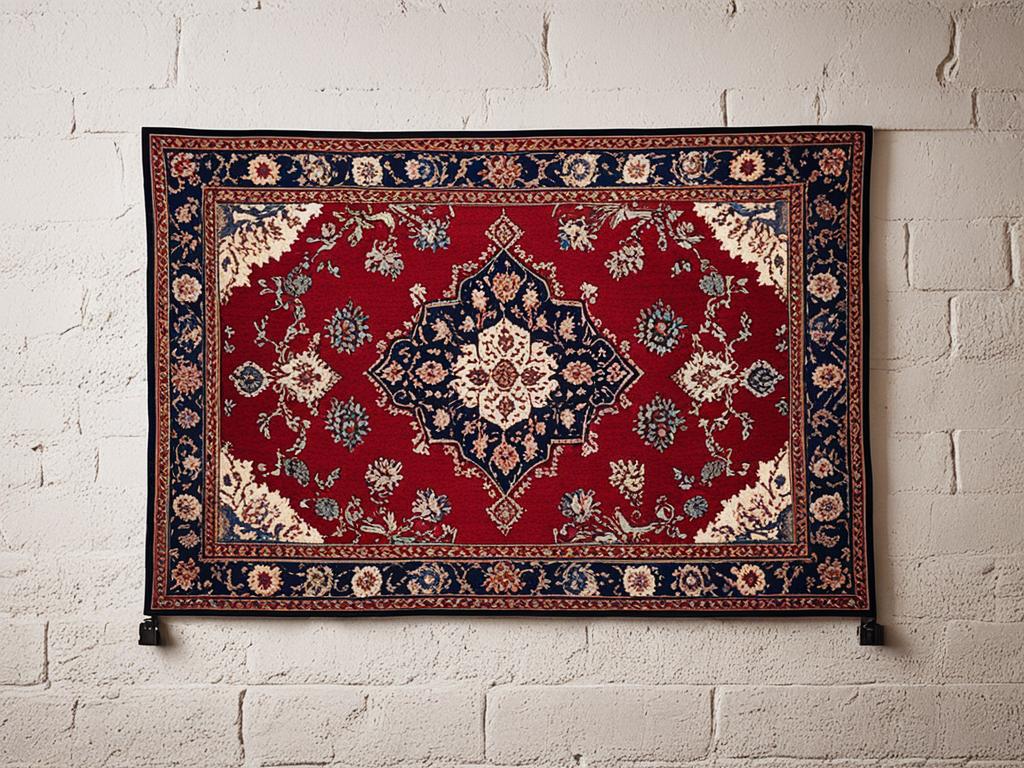
For a modern touch, consider sleek matte black rug clips. These clips not only secure your rug firmly to the wall but also add a contemporary vibe to your space. They create a seamless look, allowing your persian rug to take center stage and become a captivating focal point in any room.
If you have a smaller or lightweight rug, rug clips are particularly well-suited. They provide the necessary support to hold your rug securely in place without causing any damage. With rug clips, you can confidently hang your oriental rug on the wall and enjoy its beauty every day.
Using a Quilt Hanger: Ideal for Small or Light Weight Rugs
For small or lightweight Persian rugs, utilizing a quilt hanger can prove to be an excellent choice. This method involves the attachment of a quilt hanger to the wall, allowing you to secure the edge of your rug between the two matching pieces. Not only does this provide a secure way to hang your rug on the wall, but it also offers a visually appealing display. Quilt hangers come in various styles and finishes, enabling you to select one that complements your rug and enhances the overall aesthetic of the room.
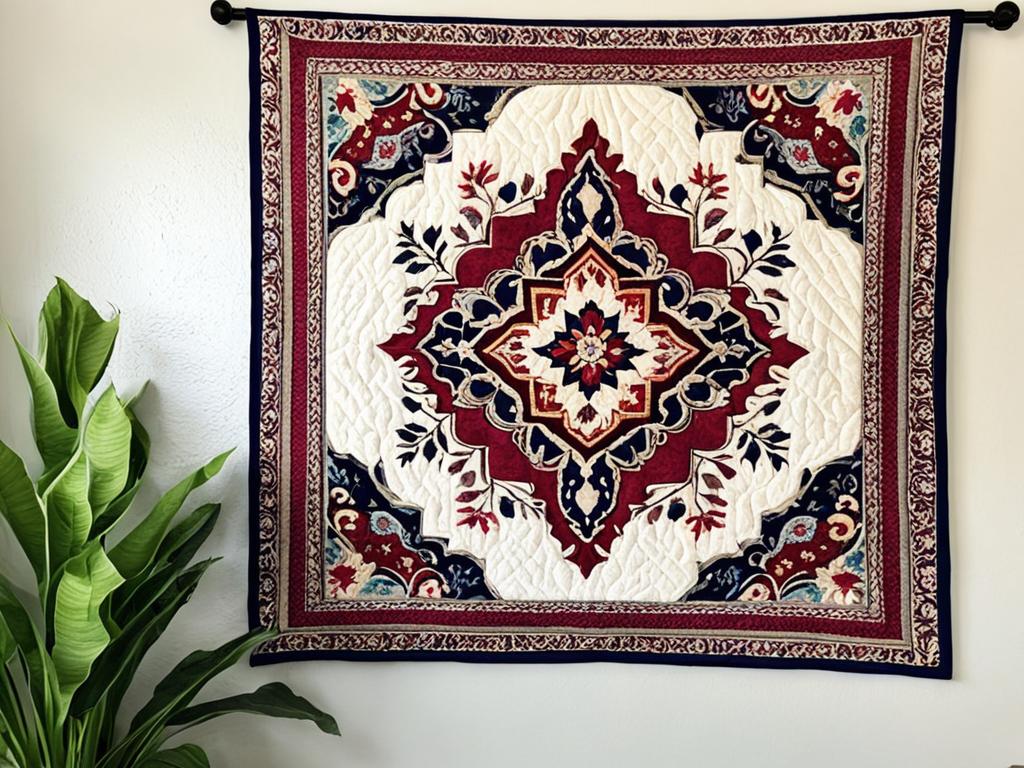
A quilt hanger offers a simple and elegant solution for showcasing your small or lightweight Persian rug on the wall. The hanger securely holds the rug in place while also ensuring that the rug is displayed in a visually pleasing manner. With a range of styles and finishes available, you can find a quilt hanger that perfectly complements your rug, creating a beautiful focal point in any room.
Conclusion
Hanging a Persian rug on the wall is a creative and stylish way to showcase its beauty and craftsmanship. Whether you decide to add a sleeve to the back of the rug, use rug clips, or opt for a quilt hanger, each method offers unique advantages in terms of ease of installation and visual appeal.
By choosing to hang your Persian rug on the wall, you can create a stunning focal point in any room. It not only adds a touch of elegance but also preserves the rug for years to come. The various hanging options allow you to customize the display to suit your style and preferences.
Whether you prefer a seamless and secure look with a sleeve, a DIY approach with rug clips, or the simplicity of a quilt hanger, there’s a method that will help you achieve the desired effect. Consider the size and weight of your Persian rug, as well as the overall aesthetic of the room, when choosing the best hanging option for your needs.
Transform your space with a unique piece of art by hanging a Persian rug on the wall. It’s a great way to infuse your decor with culture, history, and a touch of luxury. Explore the possibilities and let your Persian rug become a captivating tapestry that adds character and warmth to your home.


